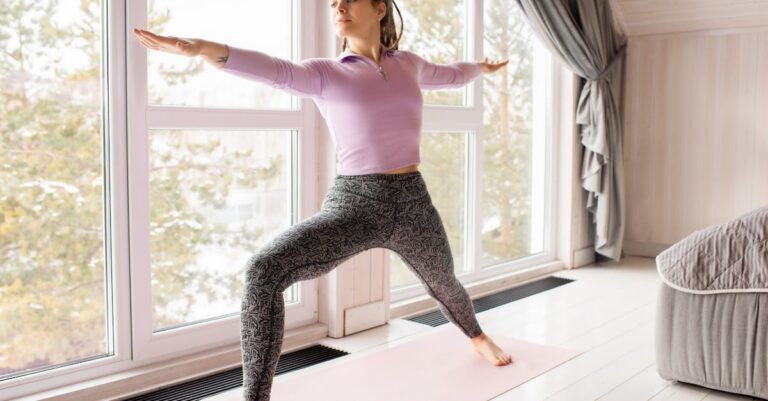Finding time to hit the gym can feel like trying to solve a puzzle with missing pieces, right? Between work, school, family, and just trying to catch your breath, squeezing in a workout often falls to the bottom of the list. You want to get moving and feel healthier, but the thought of commuting to a gym, waiting for equipment, or figuring out complex machines is just… a lot. Good news! You don’t need a fancy membership or tons of gear to build a great fitness habit. This article is all about crafting the best daily workout routine you can do right at home. We’ll walk through simple, effective ways to get started, build strength, boost your energy, and feel awesome, all from your living room. Get ready to learn how easy and fun home fitness can be!
Why Working Out at Home is Actually Awesome
Okay, let’s be real. Sometimes the idea of working out at home sounds less glamorous than a shiny gym. But think about it: no travel time means you instantly save maybe 30 minutes to an hour right there! Plus, zero waiting for the squat rack or that one treadmill everyone wants. Your living room is always open, 24/7. You can blast whatever music makes you happy (even cheesy pop, we won’t judge!), wear whatever comfy clothes you want, and nobody’s watching if you mess up a move. It’s super convenient, especially on crazy busy days or when the weather’s crummy. Imagine someone like Sarah – a busy mom who could never find childcare *and* gym time. By switching to home workouts during naptime, she finally found a rhythm that worked for her life, not the gym’s schedule. That’s the magic of home fitness – it fits you.
Setting Up Your (Maybe Tiny) Home Gym
You really don’t need much! Forget those giant, expensive machines you see on TV. Your main tool is your own body. Seriously! Bodyweight exercises are super effective. To start, all you truly need is a little bit of clear floor space – enough to stretch your arms and legs out. A yoga mat can make floor exercises more comfortable, but a rug or carpet works fine too. Good sneakers give you support. If you want to add a little something later, resistance bands are cheap, take up almost no space, and add a good challenge. Maybe some adjustable dumbbells down the line? But honestly, start simple. The most important thing is having a dedicated little spot, even if it’s just a corner of your bedroom, that signals “workout time” to your brain.
The Non-Negotiables: Warming Up & Cooling Down
Think of warming up like waking your muscles up gently before asking them to do hard work. Jumping straight into intense exercise is like trying to stretch a cold rubber band – ouch! A good warm-up gets your blood flowing and tells your body, “Okay, time to move!” This could be 5-10 minutes of light cardio like jogging in place, jumping jacks, or high knees, followed by dynamic stretches – that means stretches where you’re moving, like arm circles, leg swings, or torso twists. Then, after your workout, don’t just collapse! A cool-down helps your heart rate return to normal gradually and can improve flexibility. This involves 5-10 minutes of slower activity, like walking around the room, followed by static stretches – holding a stretch for 15-30 seconds, like touching your toes or stretching your arms. Never skip these parts! They help prevent injuries and make exercise feel better.
Getting Your Heart Pumping: Simple Cardio Ideas
Cardio, or aerobic exercise, is anything that gets your heart beating faster and makes you breathe a bit harder. It’s awesome for your heart health, energy levels, and mood! At home, you’ve got tons of options, no treadmill required. Think:
- Jumping jacks: A classic for a reason!
- High knees: Run in place, bringing those knees up high.
- Butt kicks: Jog in place, trying to kick your heels towards your glutes.
- Mountain climbers: Start in a push-up position and alternate bringing your knees towards your chest.
- Dancing: Put on your favorite tunes and just move! Seriously, it counts!
- Stair climbing: If you have stairs, walk or jog up and down them.
Aim for maybe 15-20 minutes of cardio as part of your routine. You don’t have to go all out the whole time; you can mix and match or do intervals (like 1 minute intense, 1 minute easier).
Building Strength Without Fancy Machines
Strength training isn’t just about big muscles; it makes everyday activities easier (like carrying groceries!), boosts your metabolism, and strengthens your bones. Bodyweight exercises are fantastic for this. Focus on compound movements – exercises that work multiple muscle groups at once. It’s like getting more done in less time! Some great ones include:
- Squats: Works legs and glutes. Imagine sitting back in a chair.
- Push-ups: Works chest, shoulders, triceps. Can do on knees to make it easier!
- Lunges: Great for leg strength and balance. Step forward and bend both knees.
- Plank: Amazing for core strength (abs and back). Hold a straight line from head to heels.
- Glute bridges: Lie on your back, knees bent, and lift your hips off the floor.
Try doing 2-3 sets of 10-15 repetitions for each exercise. Focus on good form – moving slowly and controlled is better than rushing with bad technique.
Putting It All Together: A Simple Daily Plan
Okay, let’s make this easy. A balanced daily routine could look something like this (remember to adjust it based on how you feel!):
- Warm-up (5-10 minutes): Light cardio (jogging in place) + dynamic stretches (arm circles, leg swings).
- Cardio (15-20 minutes): Choose 2-3 exercises from the list above (like jumping jacks, high knees, mountain climbers). Do them in intervals or mix them up.
- Strength (15-20 minutes): Pick 3-4 exercises (squats, push-ups, lunges, plank). Do 2-3 sets of 10-15 reps. Focus on form!
- Cool-down (5-10 minutes): Slow walking + static stretches (hold each for 20-30 seconds).
This whole routine takes about 40-60 minutes. Some days you might have less time – that’s okay! Even 20-30 minutes is way better than nothing. Maybe one day focus more on cardio, the next more on strength. Mix it up to keep it interesting!
Listen Up! Your Body Knows Best
This is super important. Your body sends you signals all the time. Feeling sharp pain? Stop immediately. That’s different from muscle soreness or feeling tired, which is normal when you’re challenging yourself. Don’t push through actual pain. Also, rest days are crucial! “Daily workout” doesn’t necessarily mean high-intensity every single day. Your muscles need time to recover and rebuild. Maybe some days your “workout” is just a gentle walk, some stretching, or yoga. Learn to tell the difference between “I’m feeling lazy” and “My body genuinely needs a break.” Honoring that is key to staying injury-free and consistent long-term.
Making it Stick: The Consistency Secret
The “best” workout routine is the one you actually do. Consistency beats intensity every time, especially when you’re starting out. Aiming for a perfect hour-long workout every single day might be too much at first. Maybe start with 20-30 minutes, 3-4 times a week. Schedule it like any other important appointment. Put it in your calendar! Find a time that usually works – first thing in the morning, during lunch, right after work. Tell a friend or family member to help keep you accountable. Most importantly, find activities you actually enjoy, or at least don’t hate! If you dread it, you won’t stick with it. Experiment, find your groove, and celebrate the small wins – like finishing a workout when you didn’t feel like starting.
So, there you have it! Building a solid daily workout routine at home is totally doable and doesn’t require a ton of time, space, or money. We talked about why home workouts are super convenient, how to set up a simple space, and the must-do warm-ups and cool-downs. We covered easy cardio ideas to get your heart pumping and effective bodyweight strength exercises. We even sketched out a sample plan and stressed how vital it is to listen to your body and prioritize consistency over perfection. Remember, the goal is progress, not overnight transformation. Start small, find what feels good, and be patient with yourself. You’ve got this!










